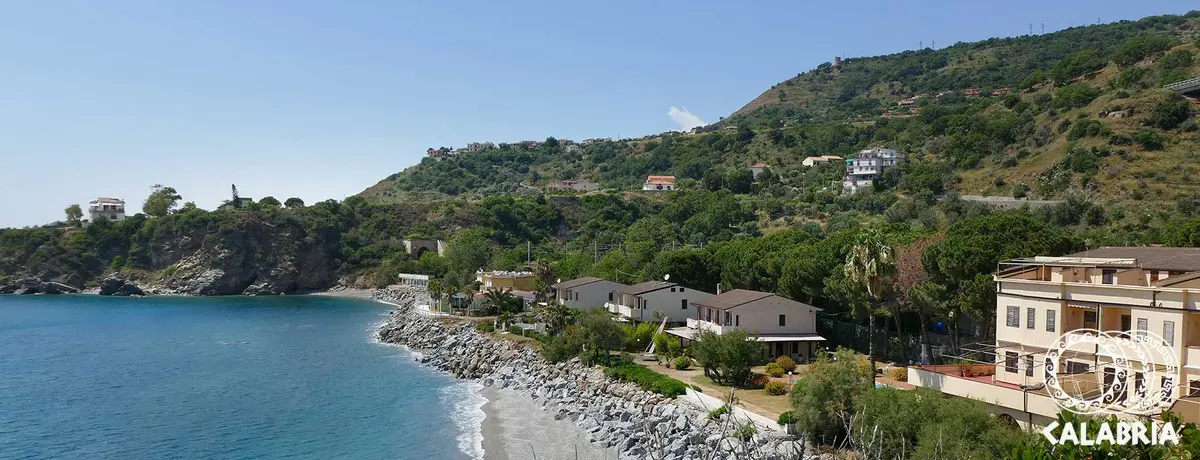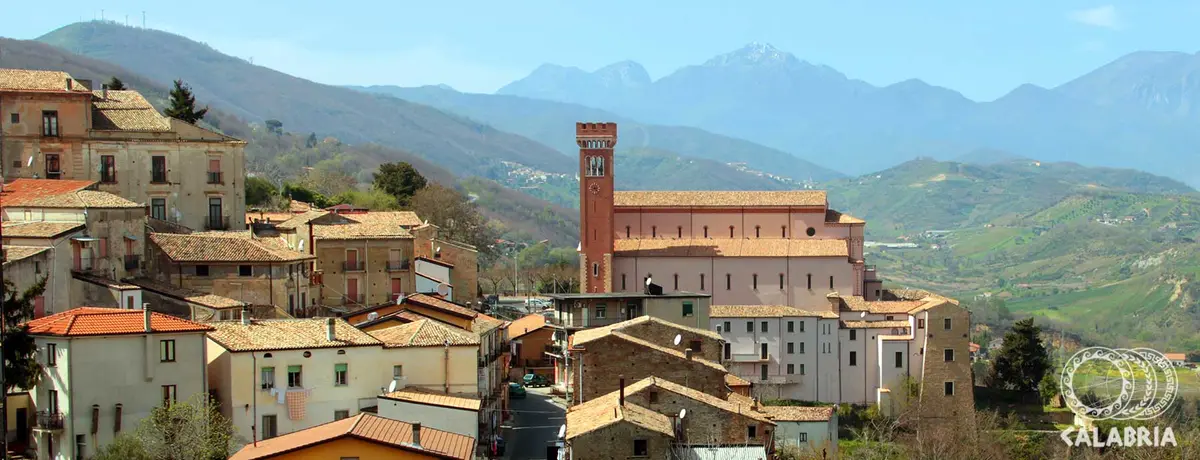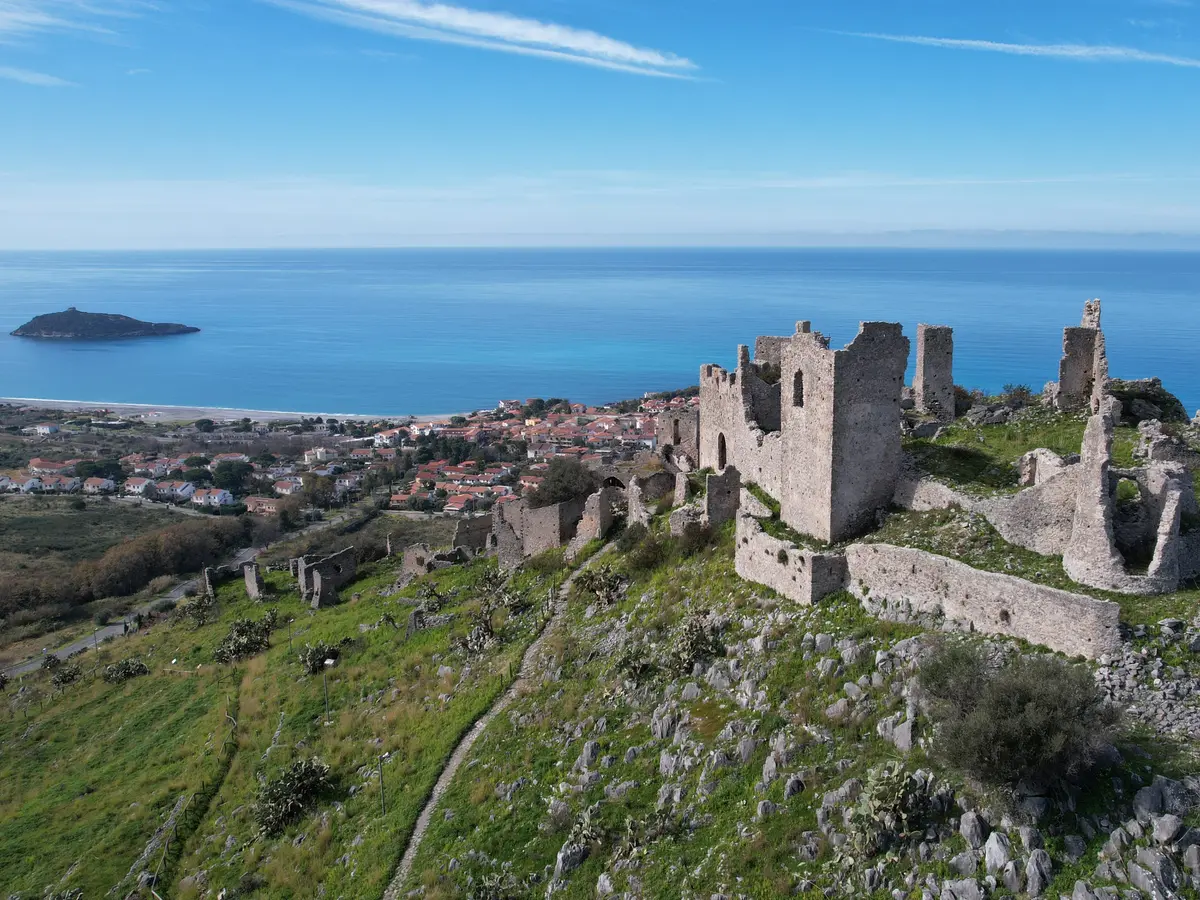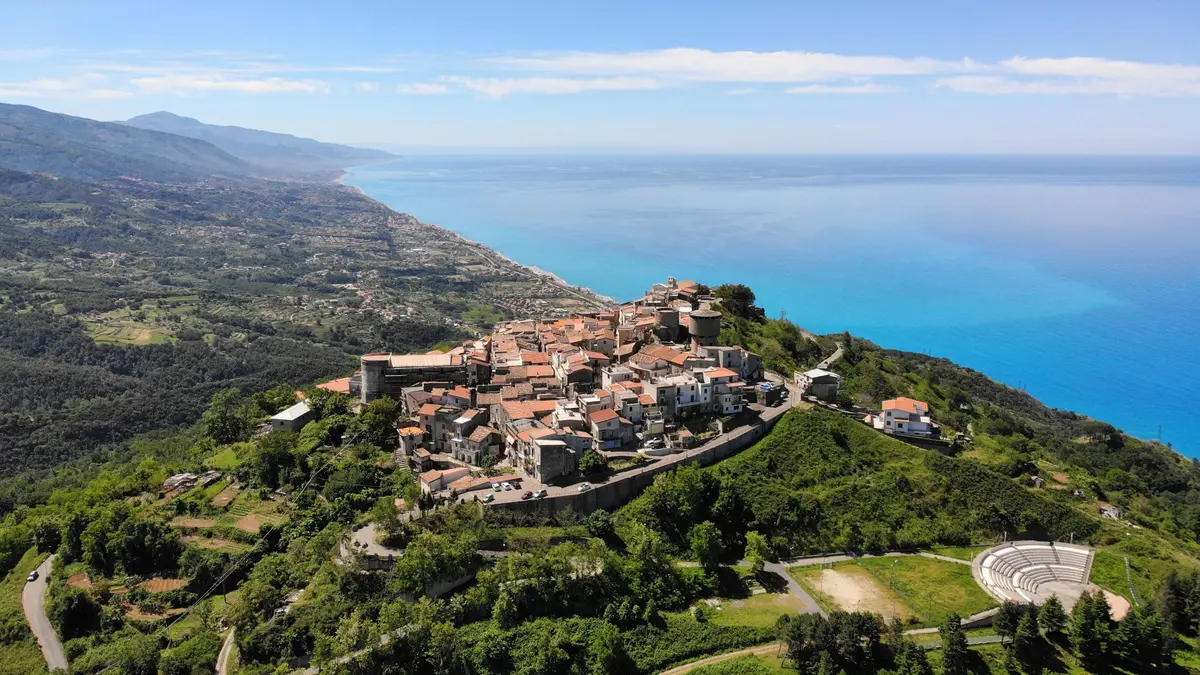Bonifati
The heart of Bonifati surrounded by land and sea

Sea
Located on the Calabrian coast known as the Riviera dei Cedri (Citrus Coast), Bonifati is both a seaside resort and a medieval hill town. The town of Bonifati, in fact, is mainly hilly and mountainous; its village is protected and located within the ruins of an ancient castle, nestled between two hills both with a large cross on top, which is where according to a legend the king and the Queen of the castle were buried respectively.
Although for centuries it remained a simple agricultural centre, Bonifati has experienced an important development over the course of the last few decades, due to the blossoming of the tourist economy along the Tyrrhenian coast.
Along the ridge visitors can enjoy beautiful views of the surrounding mountains, which extend down to the sea below.
Bonifati is protected by the ruins of an ancient castle, nestled between two hills, both adorned by a great cross on the top.
Bonifati's heritage includes palaces and churches of great artistic interest, but is above all a countryside town with the feel of ancient village due to its friendly atmosphere. Currently, next to the historical centre perched on the hills, Bonifati comprises within the municipal boundaries numerous hamlets, among which the most ancient and populated areas are those of Greco, Cirimarco, Torrevecchia, Timpone, San Candido and Telegrafo. Cittadella del Capo spreads along the coastal strip and in recent decades has experienced strong economic growth due mainly to seaside tourism. The hamlet boasts long sandy beaches, occasionally interrupted by small rocky headlands that add charm while offering protection from the waves, with some small breakwaters along the coast that create tidal pools. The coast is also dotted with many stone watchtowers, built during the seventeenth century to prevent the Saracen invasions. The biggest event of the year is held on the third Sunday of August in honour of San Francesco di Paola; the patron saint of Calabria and of mariners. The summer calendar is also filled with concerts and food festivals which take place at the seaside town and inland hamlets. Notable places of historical, artistic and cultural interest which are worth a visit are Palazzo De Aloe (today known as Palazzo del Capo), Torre di Parise and Torre di Fella. Cittadella boasts two churches: the Parish Church of the Santissima Annunziata and San Francesco di Paola and the Church of San Michele Arcangelo.
Church of San Francesco da Paola
The Church is in a modern style featuring a single nave with a trussed ceiling. The belfry is attached to the right. In 2006, the church was thoroughly restored and jthe works also included painting a large fresco on the altar depicting the Blessed Virgin and St Francis of Paola, painted by master artist Guido Faita from Montalto Uffugo.
Torre di Fella
Torre di Fella was a watchtower built along the Tyrrhenian coast; a guard post of the shoreline of Cittadella del Capo against any Saracen attacks. Declared a National Monument in 1984, the tower is currently located inside the Palazzo De Aloe, within the entrance courtyard. The building was built during Norman Age, probably in 1150, and at the time of its construction included an outbuilding destined to house military troops. Currently the building of the Torre di Fella is used for tourism.
Gastronomia
Bonifati is part of an area with a wealth of gastronomic traditions, due to the people that during the course of centuries have inhabited this sunny and fertile strip of land where the highest quality agri-foods originate, praised by nutritionists and lovers of fine cuisine. Despite the presence of the sea, typical dishes are strongly related to a past where the main sources of livelihood were agriculture and farming. Enjoy the endless preserved agricultural products harvested in-season and then stored to be eaten all-year round.
Useful information
What to know about Bonifati
Where to Sleep
There are 55 available accommodations.
Places
There are 4 places to visit.
Infopoint Bonifati
P.zza Domenico Ferrante, 33, Bonifati
No result









